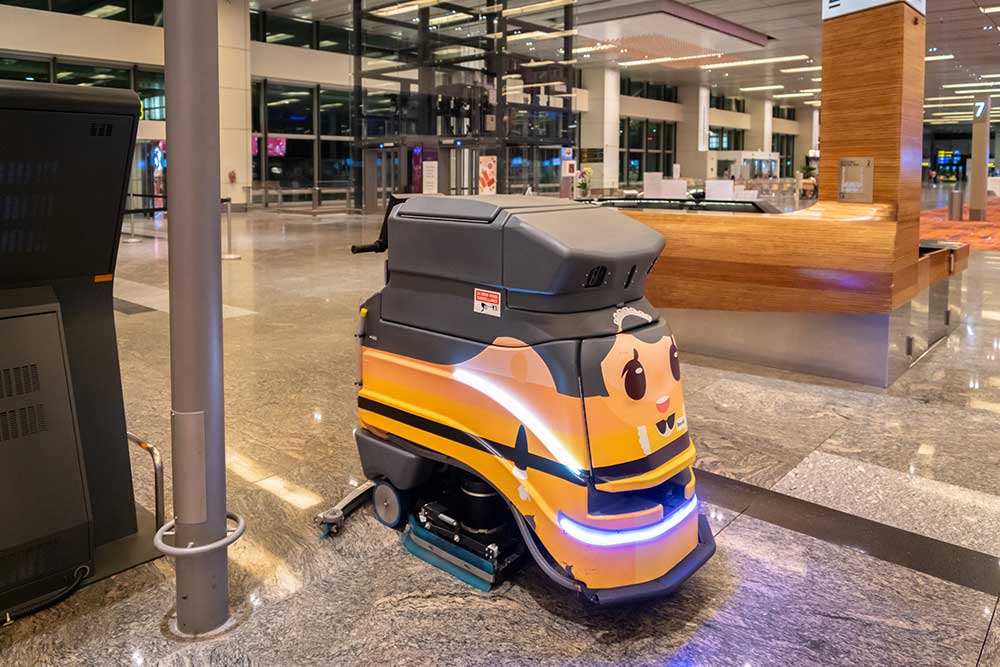To uplift the FM Sector, BCA has brought together the industry, unions, and other public agencies to form a tripartite Facilities Management Implementation Committee (FMIC). The FMIC will develop, oversee, and review the implementation of the sector’s transformation plans.
A building may glitter when new, but what happens 15 or 20 years down the road if it’s not been designed for maintainability? That’s one of the concerns the Real Estate Industry Transformation Map – through the transformation of the Facilities Management (FM) Sector – aims to address, with application of methods like the Maintainable Design Appraisal System (MiDAS).
MiDAS is a practical tool that leverages the concept of Design for Maintainability (DfM). DfM means considering the implications of downstream maintenance in a building, at the initial planning and design stages. By creating designs that accommodate long term maintenance and operational needs, we can achieve efficiency, safety, and economy of maintenance throughout a building’s lifespan.
These plants are positioned right up against the glass barrier. This is more labour intensive for facility management crews; it will require cleaning each time there is rain.
|
DfM as one strategy to transform the FM sector
To uplift the FM Sector, BCA has brought together the industry, unions, and other public agencies to form a tripartite Facilities Management Implementation Committee (FMIC). The FMIC will develop, oversee, and review the implementation of the sector’s transformation plans.
DfM is one of the key strategies in the larger scheme of things being worked upon by FMIC.
As part of this process, the FMIC has introduced MiDAS as a way to address some of the challenges in FM, through design intervention.
|
As an alternative, these plants are set back from the barrier. This will require less effort to clean, and there is easy access for maintenance personnel to reach over the foliage.
|
DfM: An enabler in Singapore’s FM sector
Up till recently, there has been less emphasis on DfM during the planning and design stages of a development. Building maintenance was an issue passed on to FM teams after initial construction; as such, designers were inclined to focus on more immediate issues such as market appeal or lower construction costs. Downstream maintenance was not given sufficient attention at these initial stages.
The lack of DfM resulted in buildings with issues such as poor maintenance access or inappropriate choice of materials; some design features were implemented without considering detailing for long term durability. Examples include ventilation units placed in inaccessible areas, thus requiring scaffolding, or use of materials that degrade quickly.
In the long run, this causes FM crews to hire more manpower, and to spend more on repairs and replacement. This outstrips any initial savings at the point of construction.
|
Enhancing DfM with MiDAS
MiDAS assesses the degree of maintainability of building designs from the lens of labour efficiency, and cost-effectiveness of downstream maintenance regimes.
MiDAS covers the key disciplines – architectural, mechanical, electrical, and landscape – and also comprises an innovation section to promote adoption of smart FM processes and technologies.
As a first-of-its-kind, MiDAS seeks to achieve the following:
- Foster greater collaboration among designers, developers, and industry practitioners to deliver better and more maintainable designs;
- Promote holistic sustainability by considering not only environmental aspects, but also economic and social aspects by reducing costs and reliance on manual labour, respectively, for building maintenance;
- Enable designers and developers to make more informed design decisions upfront and take a life-cycle view on the development – including considerations for not only initial capital expenditure, but also operating expenses;
- Enhance the reliability and operational productivity by integrating smart FM tools and IOT based technologies.
BCA is now working with a multi-disciplinary team – including the Singapore University of Design and Technology and Nanyang Technological University – led by Surbana Jurong to finalise the MiDAS.
How does MiDAS work?
MiDAS is used to factor cost and labour-intensive maintenance issues that are influenceable by design. It presents a set of design strategies and solutions to address them, with a view on the building’s overall lifecycle.
When analysing the design of a building, a MiDAS score is then derived based on the adopted set of design solutions. The final score gives designers and developers an estimate on the potential labour and cost savings to upkeep the building over its intended lifespan.
In this way, MiDAS also establishes a common standard, in gauging adherence to DfM.
MiDAS will be piloted in some 10 public and private projects including the new Surbana Jurong Campus, Ascendas-Singbridge's integrated development, Ascent, and PSA's new office building at Pasir Panjang.
|
|
 Automated cleaning units can manage simpler tasks like keeping the floor mopped and dry; this frees up maintenance personnel, allowing them to handle more complex tasks. Automated cleaning units can manage simpler tasks like keeping the floor mopped and dry; this frees up maintenance personnel, allowing them to handle more complex tasks.
|
|
The benefits of DfM and MiDAS go beyond FM stakeholders
By the end of its lifespan, as much as 60% to 80% of a building’s total cost go into maintenance and day-to-day operations; not its initial construction. Incorporating DfM principles not only benefits FM personnel, but also property owners. They are spared higher maintenance cost and their property retains its value over a longer time. In addition, businesses occupying the space enjoys a building that remains functional and in a pleasant state even after a long time.
If you are a designer or developer, find out how you can implement MiDAS for your next project.